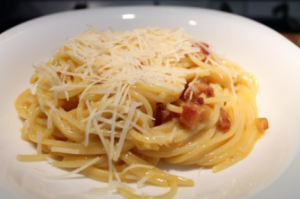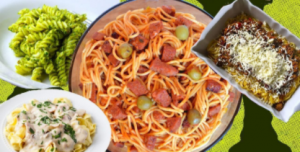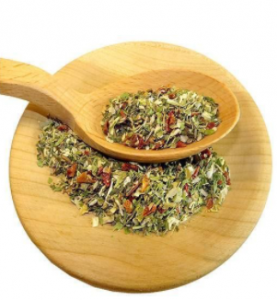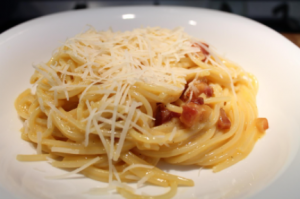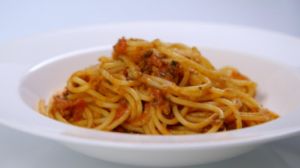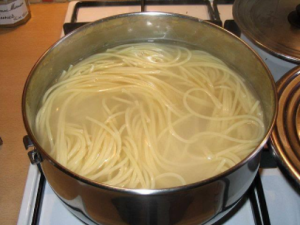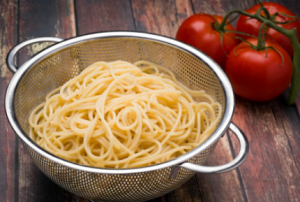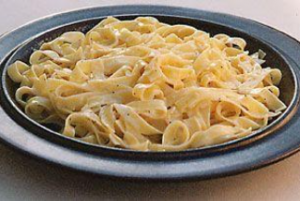Pizza and pasta have long been in the world’s culinary treasury. But Italian cuisine is not just famous. It has long been legendary and is surrounded by many myths.
Most of the stories and statements are true, but there are some that have gained popularity over the years without any truth in them. Many of the myths are related to the Italian classics spaghetti, pizza and risotto.
10 myths about Italian cuisine
In Italy, only olive oil is used for cooking
This is not entirely true, although olive oil is really revered in Italy. It is most typical of the cuisine of Southern Italy. Traditionally in the northern part of Botusha oil is used.
In the central part of the country they even often cook with lard. This does not diminish the importance of quality Italian olive oil in the diet of Italians.
2. The pasta and pizza are sprinkled with ketchup
Never ask the waiter to bring you ketchup at a restaurant in Italy. This will put you in the group of amateurs in eating pasta and pizza. Ketchup can’t compete with the delicious sauces that are part of pasta recipes.
Using it to season typical Italian food is more of an American influence. Making spaghetti sauce and other types of pasta is a tradition and it is believed that every family has its own recipe. But as times change, in Italy some young people are starting to add ketchup to pasta and pizza .
3. Italians add a lot of spices to every dish
There is a minimum of spices in real Italian cuisine. For the unique taste of their dishes, Italians rely on a combination of fresh quality ingredients. There are, of course, spices, but they are well dosed.
Restaurant visitors, however, often add a lot of black pepper to the dish or salt it without even trying it, thus killing the taste.
As a spice to many traditional Italian dishes is served grated hard Parmesan cheese. It is often used as an addition to spaghetti, risotto, some types of soups and salads. It should also not be overdone to keep the authentic taste of the dish.
4. The recipe for spaghetti carbonara contains cream
No cream is added to real Carbonara pasta. The original sauce is made from raw egg yolks. To them is added the egg white of one or two eggs, mixed with grated Pecorino Romano cheese. Then the egg mixture is mixed with fried bacon and a little of the water from cooking the pasta.
There are exceptions. In northern Italy, cream is present in the recipe for Carbonara, and instead of sheep cheese Pecorino they use cow Parmigiano cheese.
For the Carbonara sauce, the bacon is cut into cubes, not strips, and fried in its own fat. As Pasta alla Carbonara means “Coal Pasta”, black pepper goes well with it, but parsley is not recommended. Onions and garlic appear in recipes mainly outside Italy.
5. The most popular pasta in Italy are spaghetti bolognese
For people outside Italy, the most famous pasta is spaghetti bolognese. Bolognese sauce is typical for Bologna in the Emilia-Romagna region. In this part of Italy, however, spaghetti is not the most commonly prepared pasta.
More popular are tagliatelle, papardelle and capellets, so Bolognese pasta is rarely understood as spaghetti bolognese. In addition, many Italians are not fans of the combination of pasta with tomato-based sauce, such as Bolognese.
There is another myth associated with making spaghetti with minced meat and that is that Italians make spaghetti with meatballs en masse. This recipe is rather American-Italian. In the cuisine of Southern Italy there are sauces with meatballs, but they are much smaller than the American ones.
6. The most popular Italian dessert is tiramisu
Yes, tiramisu is as popular as vanilla gelato. Biscuit and mascarpone cakes can be found in most Italian restaurants, but in Italy there are desserts more popular than tiramisu, say confectioners from Botuşa. A very favorite of Italians is, for example, the traditional Sicilian dessert canola, which is a crunchy waffle tube filled with ricotta.
7. When cooking spaghetti, add fat
Cooking spaghetti seems like a simple job – you put it in boiling water and in a few minutes they are ready. In fact, cooking pasta, like any other culinary action in Italy, is an art.
A myth that has nothing to do with the original technology is that olive oil or vegetable oil is added to prevent the spaghetti from sticking. This is not true.
The fat will only make them more slippery and you won’t get a good solder with the sauce. If the pasta is good quality, it won’t stick, and if you add oil, the sauce instead of sticking to the pasta will settle to the bottom. plate.
8. The paste is washed after cooking
Many people in our country believe that the pasta should be washed after cooking. In general, cooking is done in a lot of water, as per liter to fall 100 g of dry pasta. Connoisseurs of Italian cuisine say that the pasta should not be in any case to wash after boiling, because the water washes away the surface layer of starch, and it helps to stick to the sauce.
And the most important rule is to boil the pasta “al dente”. This means literally “to the tooth” – it should be slightly firm in the middle when chewed. There are still housewives who believe that pasta should be well cooked so as not to “crunch” and even overdo it.
9. Caesar salad is very popular in Italy
In fact, this salad was invented by Italian-American chef Cesar Cardini, and in Italy itself it is not very popular. Cardini is an Italian immigrant with restaurants in Mexico and the United States.
According to legend, he created the salad when, due to the many customers who visited his restaurant on the occasion of the Fourth of July in 1924, he ran out of stocks of food in the kitchen. Cardini handles what is available in the restaurant name.
It happens that Italians add chicken to a salad, but they don’t call it Caesar. So this salad is much more popular in other countries around the world compared to Italy.
9. The pasta or risotto is served as a side dish
The popular Italian classic pasta and risotto dishes have their own place in the Italian’s menu and are not served as a side dish. They are finished dishes with their own meaning in the diet and are usually served after traditional Italian antipasta. The word antipasta itself means “before pasta”, ie it is eaten before the main course, which for Italians is often pasta.
10. Fettuccine Alfredo are a typical Italian pasta
Fettuccine is a type of pasta, and the most famous recipe for its preparation is called Alfredo. It is believed that this dish was first made in Rome, but actually became popular in the United States, so it is both Italian and American.
The original recipe of the restaurateur Alfredo is based on a very common way of making pasta in Italy, which is called burro e parmigiano. This literally means “parmesan butter”. There is absolutely nothing special about making pasta with cheese and butter, but the contribution of the Italian chef is to put double the amount of butter in the sauce.
According to legend, Alfredo invented this innovation in honor of his beloved, who was pregnant. At the same time, American tourists were impressed by the unique taste of this unpretentious combination of ingredients and named the dish fetuccini Alfredo in honor of the Roman chef.
The Americans took the recipe home, and over time it changed, adding all sorts of ingredients – cream, béchamel sauce, chicken, broccoli, shrimp or mushrooms. Popular, simple as products, but very tasty authentic pasta by Alfredo, contains only 3 ingredients, but has already entered the culinary classics.
To this day, most chefs stick to the original version, using butter, cream and hard Parmesan cheese in the fettuccine sauce. Season the dish with black pepper.

